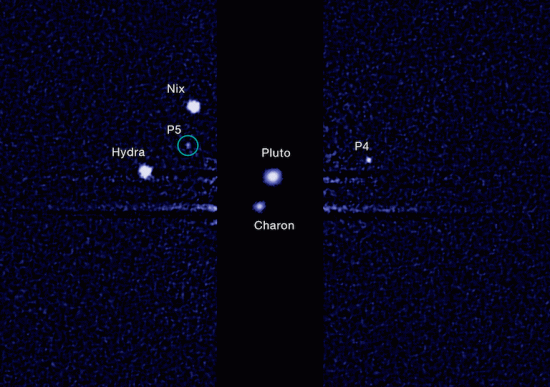

Near the end of the eighteenth century the nebular hypothesis was born. It grew in popularity for more than 100 years and then appeared to die in the early twentieth. The cause of death was said to be contradictory evidence and careful analysis of the premises, leaving no foundation for its continued existence. However, after vigorously applying new modifications of the theory so that black hole physics could also remain alive, it experienced a resuscitation of sorts and continues with us to this day.
The hypothesis suggests that the Solar System condensed out of a cloud of molecular gases and dust in a period measuring billions of years. Eventually, the dust and gas shrank to the point where compression heating started a nuclear chain reaction in the dense ball of hydrogen and helium at the center of the cloud, giving birth to a new star. As the material continued to be gravitationally attracted toward the center of the ever-shrinking mass, it formed a structure called an accretion disc circling its equatorial plane.
Much like the rings of Saturn, only much more dense and far larger, the accretion disc extended out beyond the orbit of Neptune. During the collapse phase of the Solar System’s evolution, according to scientists, eddies and whirlpools of matter formed in the ring of dust and gas. Those eddies grew larger as they attracted more material into them, slowly sucking in larger and larger particles, then pebbles, then boulders, until hundreds of millions of impacts from nebular condensates gradually formed the planets.
The theory was later amended in order to explain the origin and “holding area” for the many comets that enter the Solar System every year. The Oort Cloud is supposed to be a giant nimbus of small fragments left over from those early days when the Sun was a newborn star. It is said to be a spherical region enclosing the Sun at a maximum radius of about 5 trillion kilometers and contains billions of objects, some as big as small planets, but most around the size of a medium asteroid. Closer in to the Sun is another region of primordial planetoids called the Kuiper Belt.
The Kuiper Belt theory is the creation of astronomer Kenneth Edgeworth from Ireland and also separately by American astronomer Gerard Kuiper in 1951. The first Kuiper Belt Object (KBO) was discovered in 1992. Sometimes known as “trans-Neptunian Objects” dozens of KBOs the size of small moon-sized planets have recently been added to the Solar System’s repertoire of family names.
Eris is the largest KBO, approximately 5% larger than Pluto and is located 1.4 trillion kilometers from the Sun. Eris has its own small moon called Dysnomia. Quaoar is about 6 billion kilometers from the Sun and revolves in the region of the Kuiper Belt beyond Pluto’s orbit. Quaoar is the third largest KBO, half the size of Pluto and about as large as Pluto’s moon Charon. The fourth largest KBO yet discovered is Varuna, which is about 40% as large as Pluto.
After the recent vote by the astronomical community, Pluto is no longer considered a planet and has been relegated to the status of KBO, making it the second largest such object in the Solar System. So, Eris, Pluto, Quaoar, Charon and Varuna are the five largest Kuiper Belt Objects.
There is a kink in the order and arrangement of the so-called KBOs, however. An object called Sedna has been discovered in an orbit that is much farther out than the grouping that includes Eris, Quaoar and Varuna. Sedna is large, about as big as Pluto, but it is nearly 10 trillion kilometers from the Sun, making it too far away to technically be considered a Kuiper Belt Object. The theory has yet to accommodate Sedna other than to say that it might be from the Oort Cloud and not the Kuiper Belt.
In passing, it must be noted that the Star Dust cometary mission demonstrated that the existence of comets in such a far away and frigid nursery as the Oort Cloud was impossible because of the minerals found in the coma of Comet Wild II. Their presence indicates that the comet formed in a much hotter environment than what the hypothetical Oort Cloud could provide.
On January 19, 2006, NASA launched the New Horizons spacecraft, a mission designed to explore the outer Solar System, including Pluto, Charon and recently discovered Kuiper Belt Objects. When New Horizons gains its mission objective sometime in 2015, Electric Universe theorists expect the researchers to be surprised. Because the nebular hypothesis reached preeminence before scientists realized that 99 percent of the Universe is plasma, the conclusions derived from the hypothesis are therefore not connected with real observations.
Stephen Smith
Get Citizensjournal.us Headlines free SUBSCRIPTION. Keep us publishing – DONATE



